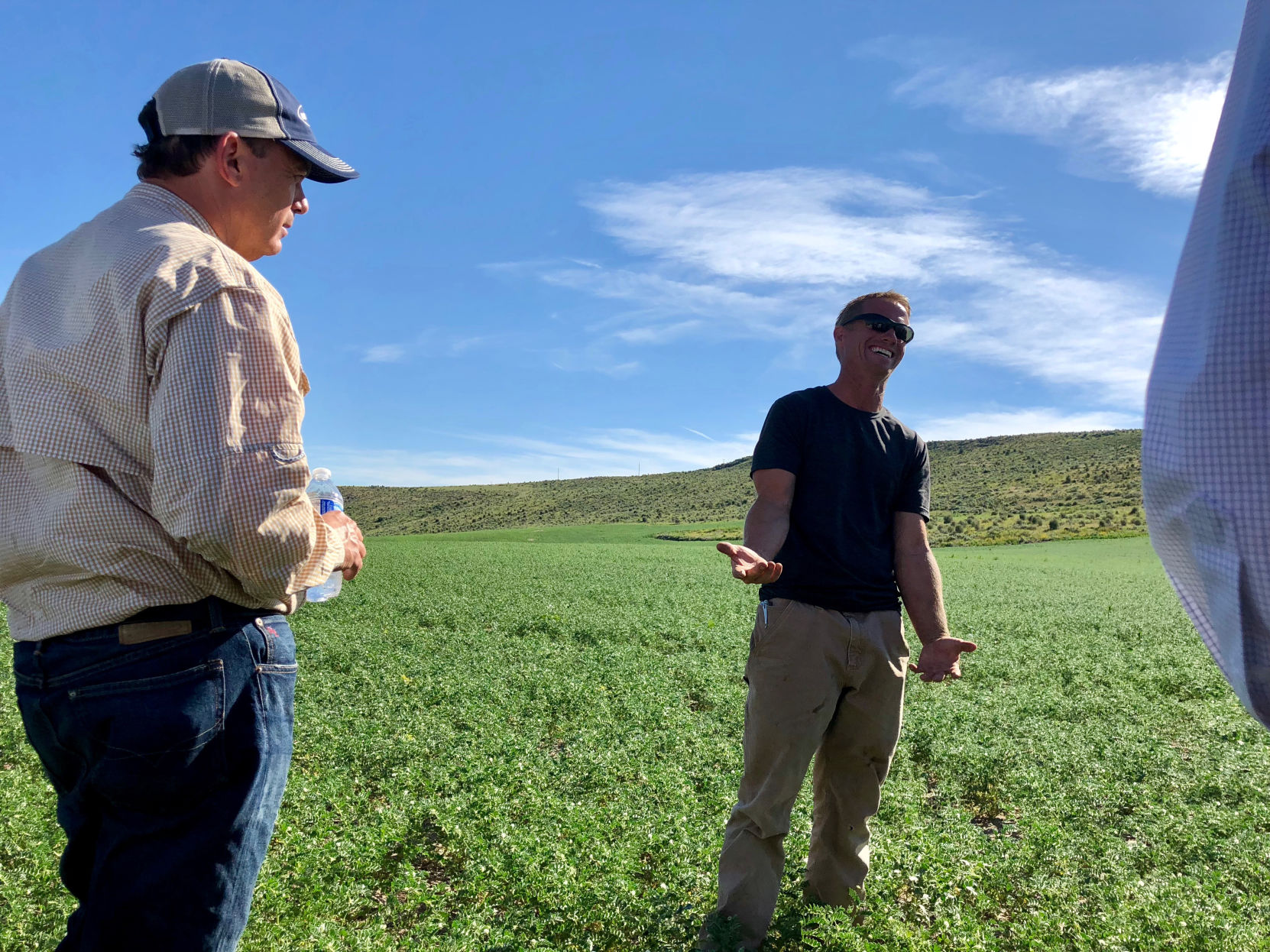Put farmers of different commodities and regionalities together on a bus tour. Add in visits to different cropping and livestock systems. Stir in a dash of local and state political commentary. Simmer for a week.
It’s a recipe for understanding across commodity and state boundaries that hopefully results in farmers better able to come to compromises when it’s time to advocate for farm policy that serves everyone.
It’s the premise behind the National Cotton Council’s Multi-Commodity Education Program, sponsored by John Deere through the Cotton Foundation. From June 24 to 29, a group of 14 cotton farmers from cotton country traveled to Idaho as guests of the Idaho Barley Commission and the Idaho Grain Producers to get an in-depth look at the needs of cereal grain farmers in the Pacific Northwest.
It was a continuation of the previous year, when farmers from the north came to Texas to learn about cotton, explained John Gibson, director of member services for the National Cotton Council. Thirteen of the 17 cotton-producing states were represented on the tour, ranging from producers to ginners and other industry professionals. Most of the cotton participants also raise wheat or other crops in rotation with their cotton, and a few had livestock too.
Dwight Little, president of the Idaho Grain Producers, which represents wheat and barley farmers in Idaho, welcomed the cotton growers to his state. As president of the National Barley Growers Association, he said events like this one help both commodity groups understand the issues each faces at farm bill time. With shrinking barley acreage every year due to increased corn and soybean production, barley growers could use the added voices from the cotton lobby to help further both causes on Capitol Hill.
Traveling around the eastern portion of Idaho, from Twin Falls to Rexburg and stops in between, the cotton growers on the trip were better able to understand the many varied political and regulatory issues that their northern farmer counterparts face. From understanding Idaho water rights, to exploring the many facets of potato production, to learning about the various specialty crops that cereals producers are turning to for rotations, tour participants were able to interact with their hosts and really get a feel for the challenges of farming in Idaho. Cotton growers toured trout farms; a dairy; the King Creek Ranch grazing association; the Monsanto phosphate plant and a phosphate mine; the Wada Farms fresh potato packing facility; the InteGrow Malt Plant; Larsen Farms hay compaction facility; and the Idahoan dehydrated potato plant, as well as tour local crop production with various farmer hosts.
“I really appreciate the fact that these folks had the opportunity to come to Idaho and we sure enjoyed hosting you and we hope it’s something that we can continue,” Little said. “It’s been a great benefit to both the northern farmers and the southern farmers, both the hosts and those spending time here. We had the opportunity to go to Texas and surrounding areas and see that production down there and that was a great experience too.”
Kent Goyen is a cotton grower from Pratt, Kansas, who was on the tour. With prior participation in the NCC’s P.I.E. tour to California more than a decade ago, he had an idea of what was in store for this trip.
“Really, I just wanted to see the country side and what they did up here,” Goyen explained. “I’d heard about their potatoes and the trout farms, but then we found out about the differences in the elevations and moisture, and how that makes things tougher than others. You appreciate what everybody goes through. We’re basically all the same, we’re trying to make a living, we’re trying raise our crops, and trying to keep our inputs low. And we all have our issues, whether it’s water, seed, governmental regulations. And we’re all trying to make it go, it’s just different times and different places.”
The Idaho hosts were just as interested in their southern guests production practices, Goyen added. Cotton is a unique crop to explain to farmers more used to grain production.
“They don’t know really anything about it, so we try to educate them,” Goyen said. “The selling is different of course. Each bale has a different grade. It’s an exchange of information and that’s the intention.
“Any time you learn something from other people, you’re better off,” he added. “I love to travel, I’ve been lots of places and anywhere you go the people are the most interesting thing you experience. The more you learn about other people the better off you are. You either temper your opinion or you expand your opinion.”
Jennifer M. Latzke can be reached at 620-227-1807 or [email protected].


